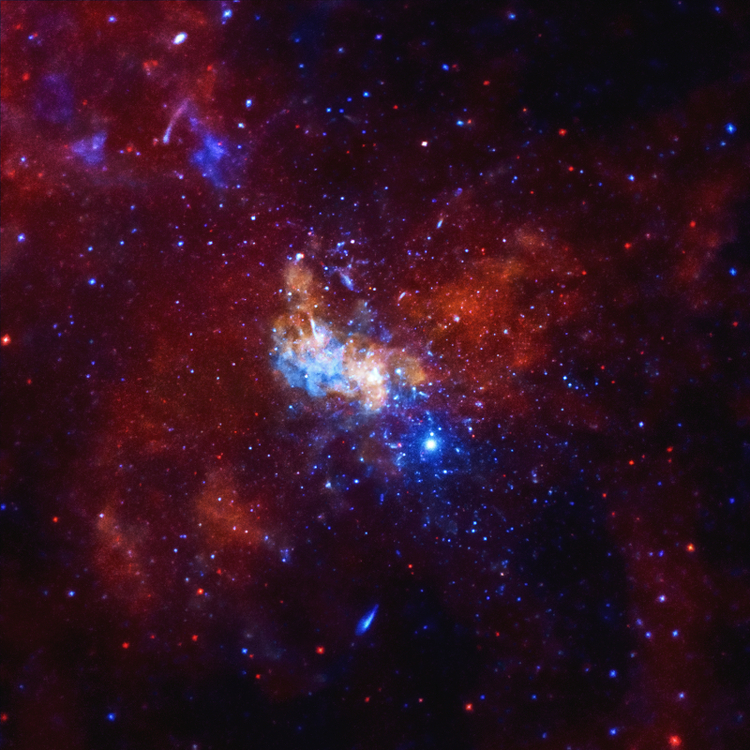
 Credit: NASA/CXC/Univ. of Wisconsin/Y.Bai. et al.
Credit: NASA/CXC/Univ. of Wisconsin/Y.Bai. et al.
Ghost Particle Factory?
Mysterious high energy particles pervade space. Some of these are broken bits of atoms called cosmic rays, accelerated to energies almost beyond imagining by forces unknown. Others are weird "ghost particles" called neutrinos, named by Enrico Fermi to explain how a neutron breaks down into an electron and proton. Neutrinos are sometimes called "ghost particles" because they hardly interact at all with normal matter; in fact, billions and billions of these particles, generated by nuclear reactions in the very center of the Sun, pass through your body each second. Scientists have detected ultra-high energy cosmic rays, but their origin remains elusive, since these electrically charged particles get deflected by the Milky Way's magnetic field on their journey to earth. Sources of ultra-high energy cosmic rays might also produce high energy neutrinos, electrically neutral particles which in principle could be used to identify the process producing these extreme energies. Recently Ice Cube, a neutrino detector experiment buried under the Antarctic ice, identifed 36 high energy neutrino events. Some of these neutrino events were found to happen close in time to X-ray flare events from Sgr A*, the supermassive black hole lying at the center of the Milky Way. The X-ray emission from Sgr A* and the other sources in the center of the Galaxy is shown in the Chandra X-ray observatory image above. These X-ray flares were observed not only by Chandra, but also by the Swift and NuSTAR X-ray observatories as well. The likelihood that these X-ray and neutrino events were just chance coincidences is very low. Some scientists believe that this may be the first identification of a source of very high energy neutrinos.
Published: November 17, 2014
<
HEA Dictionary ● Archive
● Search HEAPOW
● Other Languages
● HEAPOW on Facebook
● Download all Images
● Education ● HEAD
>

Each week the HEASARC
brings you new, exciting and beautiful images from X-ray and Gamma ray
astronomy. Check back each week and be sure to check out the HEAPOW archive!
Page Author: Dr. Michael F. Corcoran
Last modified Tuesday, 27-Feb-2024 10:06:52 EST


